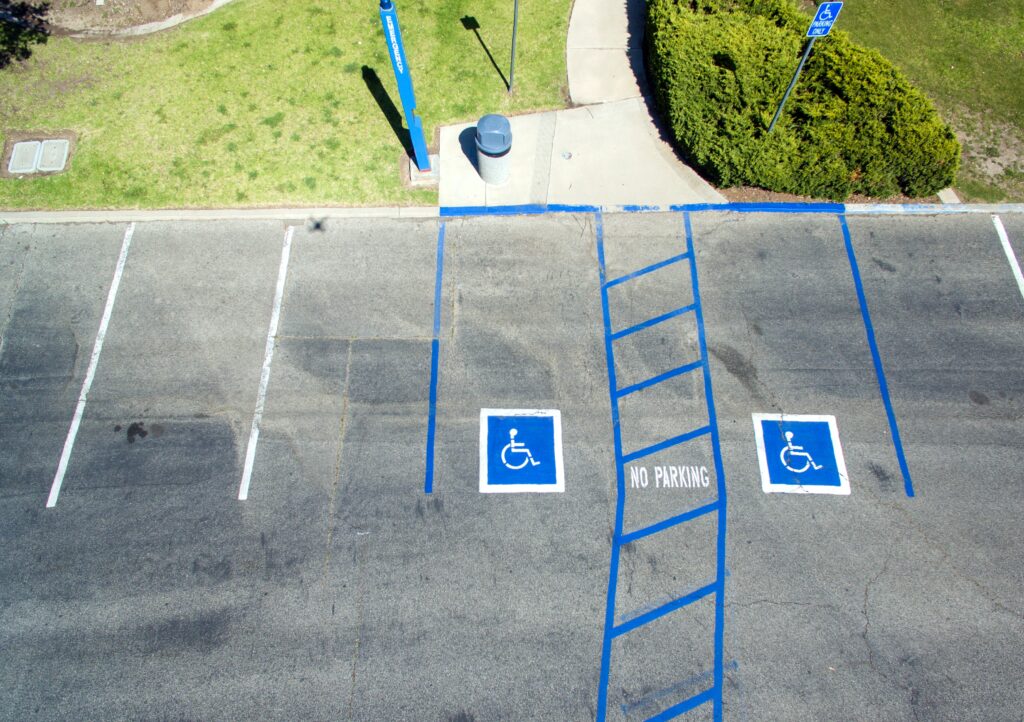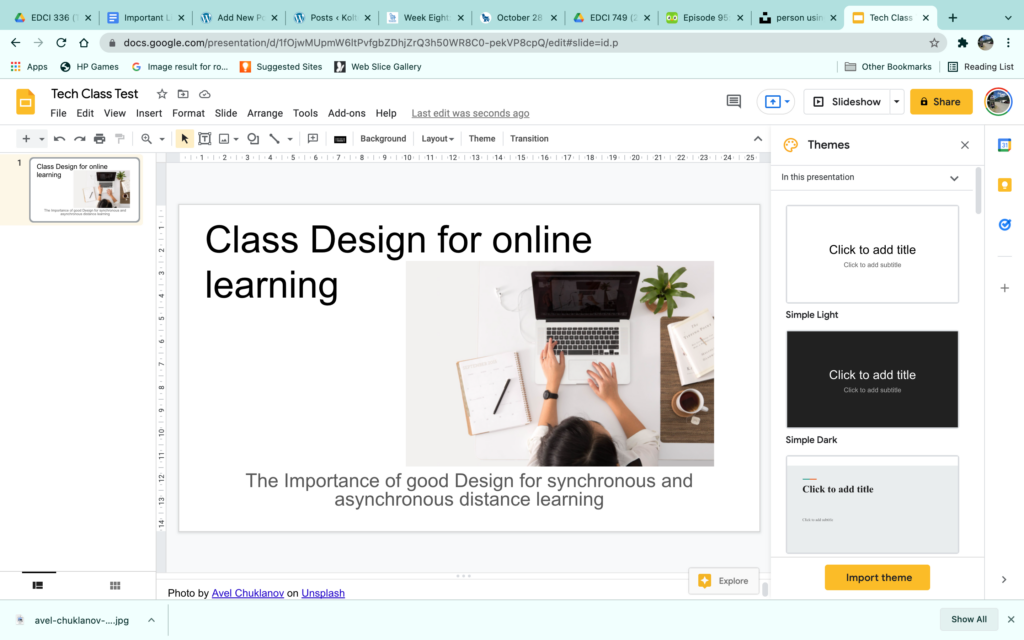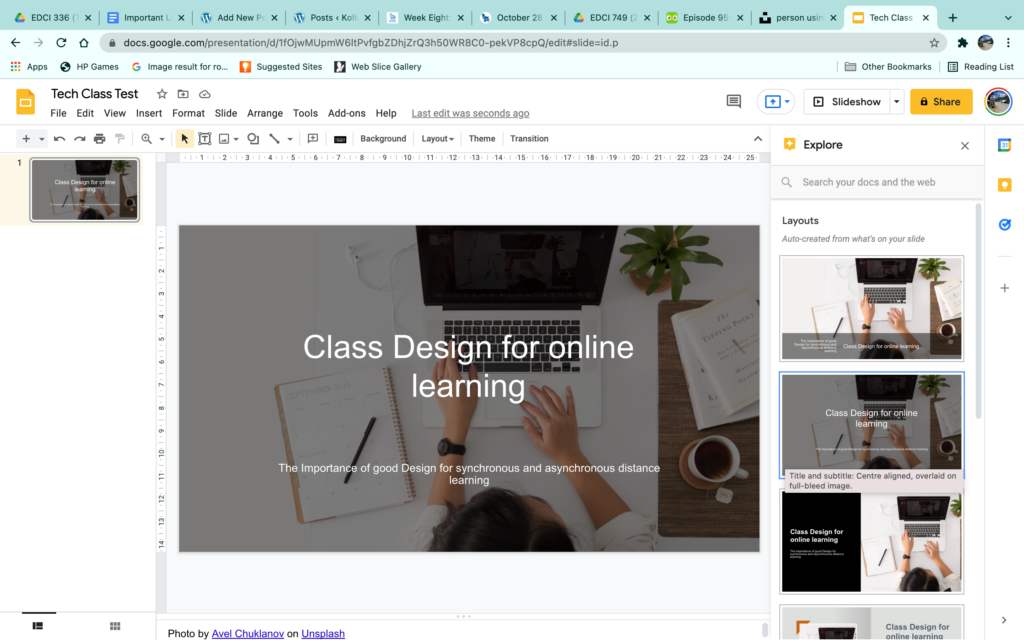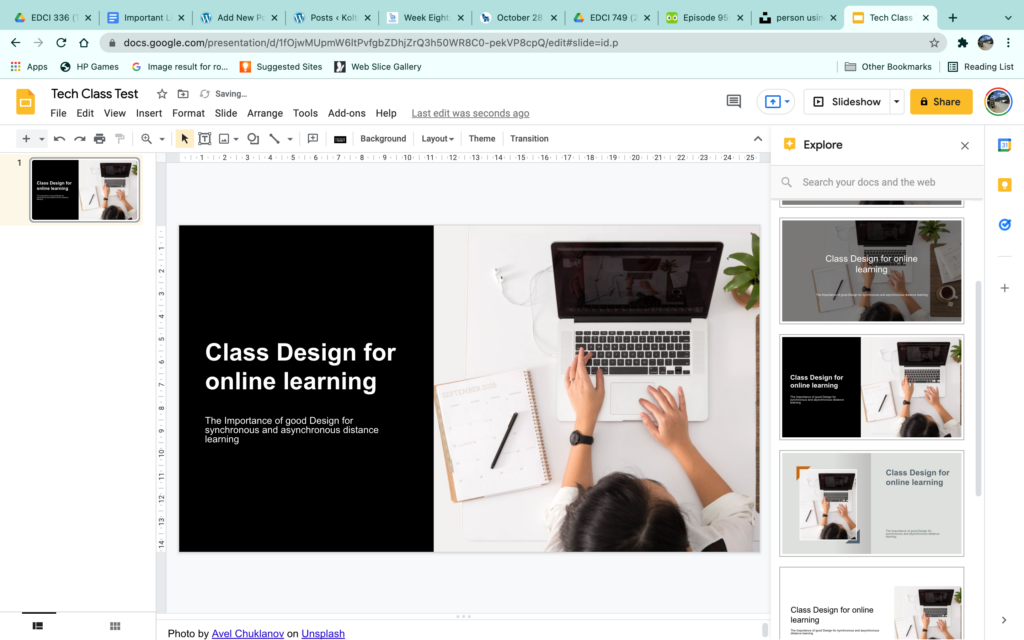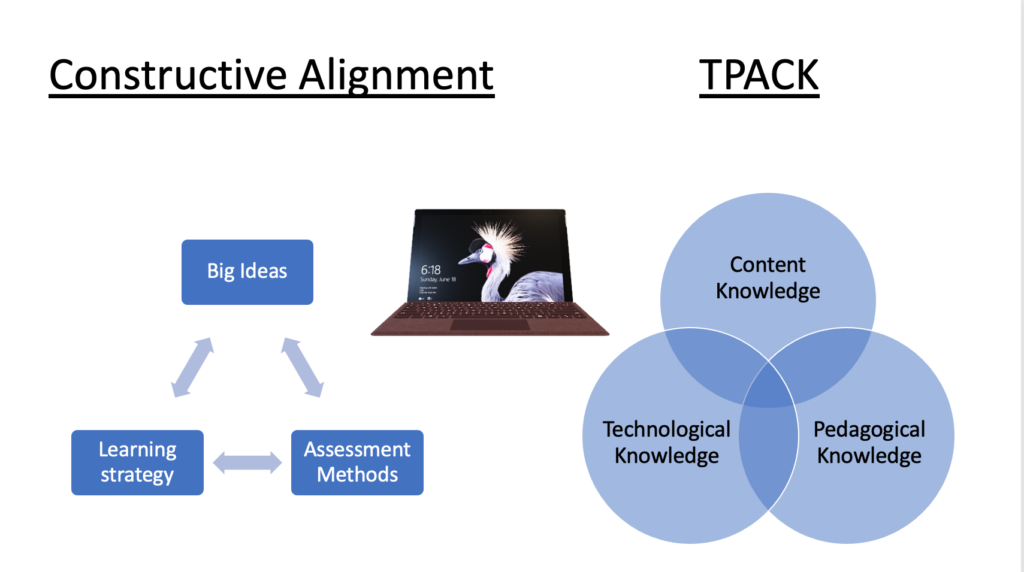
Photo by Vitalis Hirschmann on Unsplash
This week we reflected on the course ad did another ed-camp. Some of my biggest takeaways from this course are the many resources and skills that we learned about, this blog here where I see potential for curating resources in the future, and the inquiry project which was the longest an most in depth inquiry I have done.
In the Ed-camp I had the opportunity to sit in and participate in conversations about gamification of learning, and cellphones in the classroom. Both were interesting, but I appreciated that I had looked into this topic in my ed-tech inquiry so I had much to share.

After class I read Isaac Asimov’s “The Fun They Had” a short story of two children in the year 2155 reading about the schools of today. Maggie imagines that school now must have been a lot more fun as unlike her day, schools happen in person, together, with living teachers. Asimov I think was hitting on one important and often overlooked by laypeople aspect of education. That is its social nature. During the pandemic I felt like Maggie isolated and bored receiving my lessons from a machine (at least in my case the was a person on the other side). When classes returned to in person I was very excited. I feel that any predictions of future education that doesn’t have a social element are unlikely to happen or would not be good if they did.

